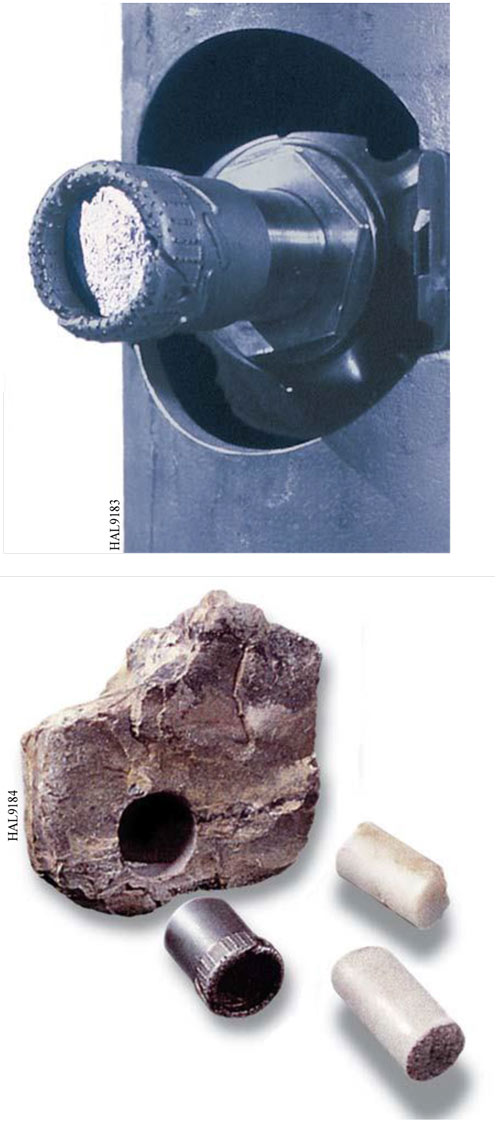Open Hole
Auxiliary
Acoustic
Nuclear
Imaging
MRIL
Pressure and Sampling
Resistivity
RSCT - Rotary Side Wall Coring Tool
RSCT™ Rotary Sidewall Coring Tool
The RSCT™ tool diamond-drills cores perpendicular to the borehole wall with continuous monitoring of the coring process. After gamma ray depth positioning, a backup shoe is extended to decentralize and hold the tool securely against the formation. A diamond bit rotating at 2,000 rpm cuts a 0.9375-in. OD, 1.75-in. long sample from the formation. Surface control of weight-on-bit optimizes drilling.
After the sample has been cut, a slight vertical movement of the bit breaks the core sample from the formation. The bit containing the sample is then withdrawn into the tool and the core is punched into a receiver tube. An indicator reveals both the existence and length of the sample. The tool is then ready for the next selected core point.
The RSCT tool is used to obtain core samples in consolidated formations. A tubular shaped drill bit with diamond cutting edges is used to drill the core. The core is recovered as a cylindrical shaped plug of the formation.
The system operates independently from other systems on the logging truck or skid. The only input required is a source of AC voltage. A recording device is necessary for recording gamma ray correlation data.
The downhole tool is controlled from the surface by use of the control panel.
Applications
Rotary core samples collected by the RSCT tool can be used to provide:
-
More accurate readings of porosity and permeability that reduce reservoir analysis variab Microfractures in core samples taken with percussion tools cause false readings of porosity and permeability
-
Information useful in fine-tuning MRIL® data
-
Reliable data for rock mechanical analysis necessary for hydraulic fracturing design, wellbore stability analysis, and sand potential prediction

Features
- Allows 30 or more cores to be taken in one run
- Can be run on Toolpusher™ service or coiled tubing to acquire cores in deviated, extended reach, and horizontal wells
- A core length indicator takes the guesswork out of core recovery
- Stand-alone tools can be run on third-party logging units
- Originally designed to recover cores in hard rock formations inaccessible with percussion tools, the RSCT™ tool can be used with equal success in soft rock formations
-
Gamma ray tool positioning provides accurate core point location
-
Core samples are undistorted with consistent cylindrical geometry which allows a wide range of petrophysical testing and analysis
-
Allows for evaluation of pre-existing formation damage by providing core samples free of distortions caused by percussion tools
-
HRSCT™ hostile rotary sidewall coring tool available for use in hostile environments


